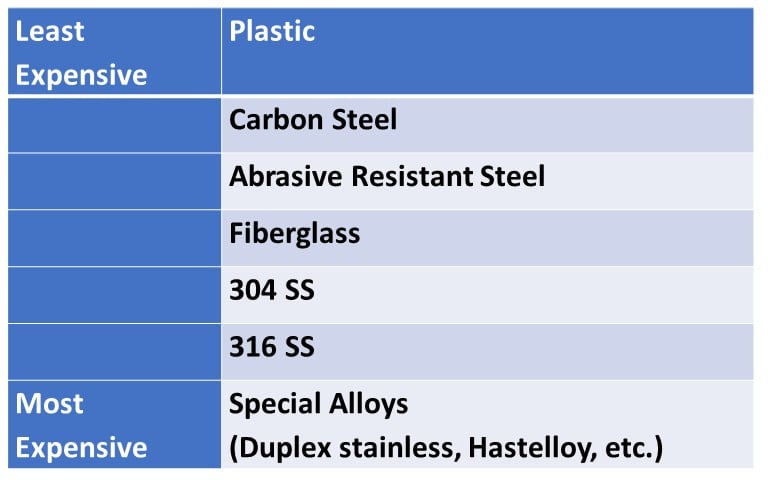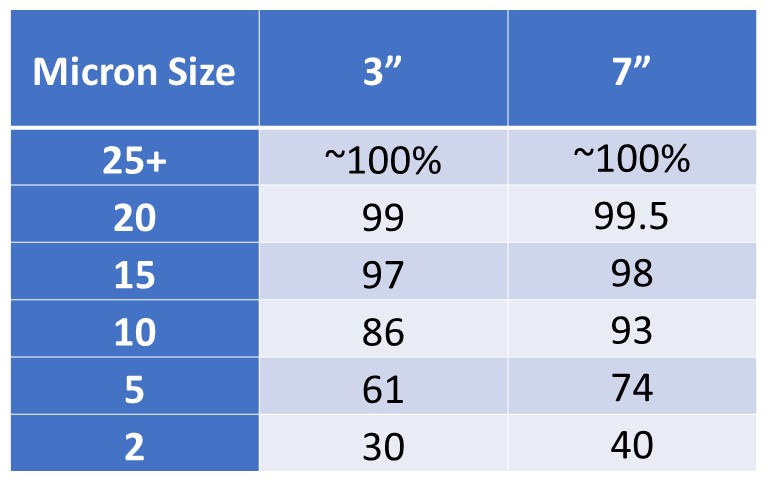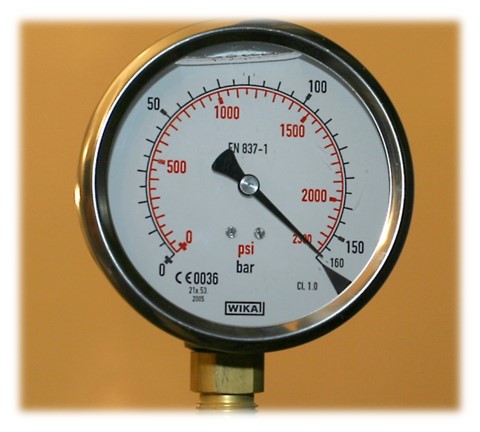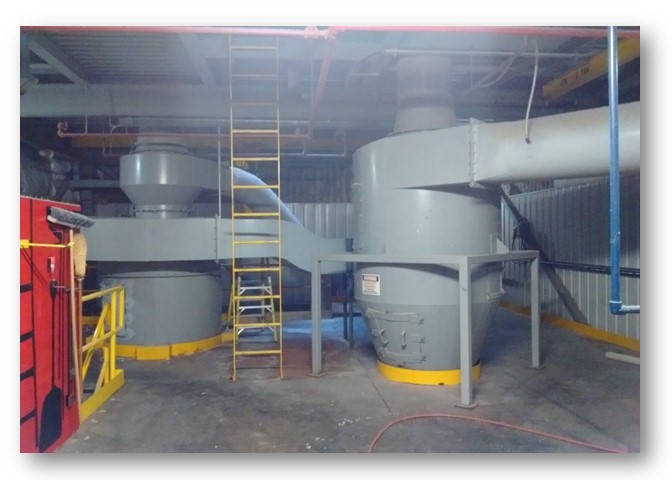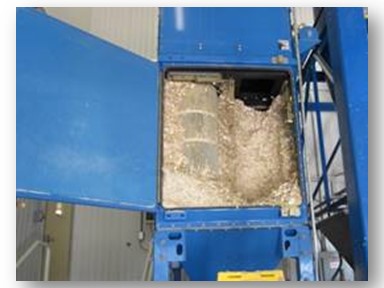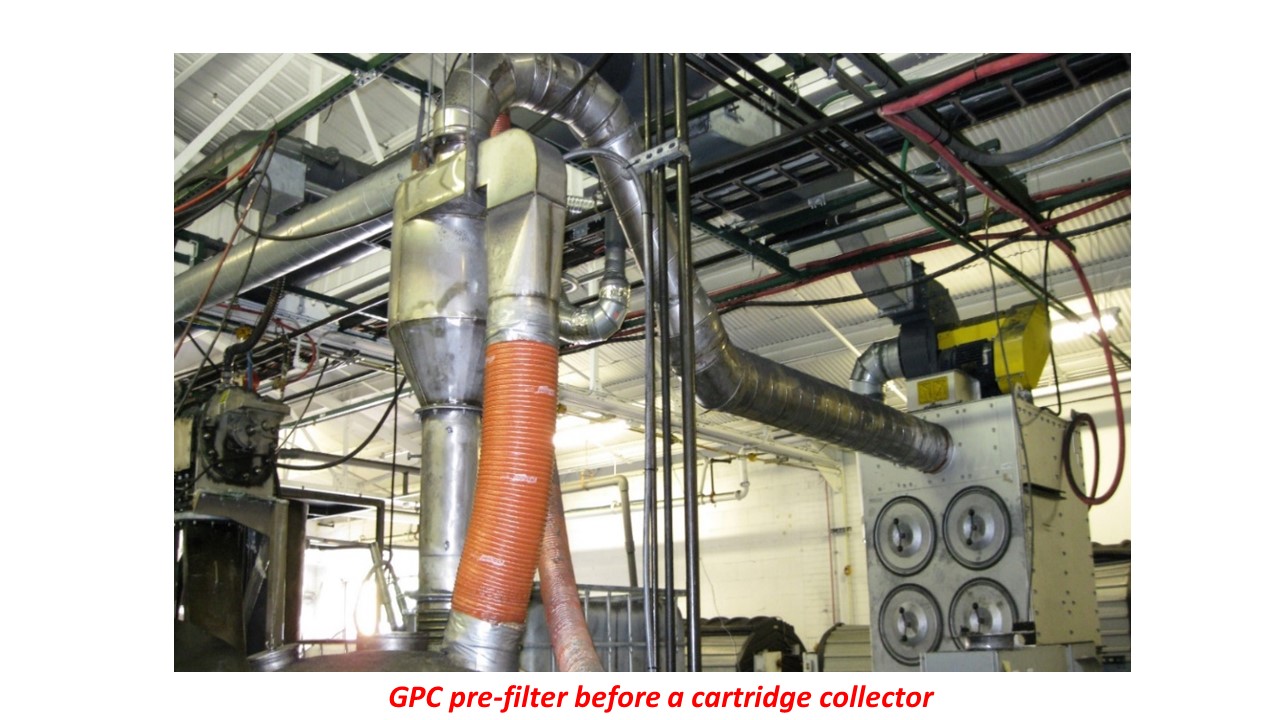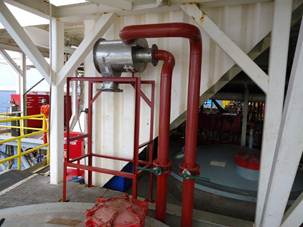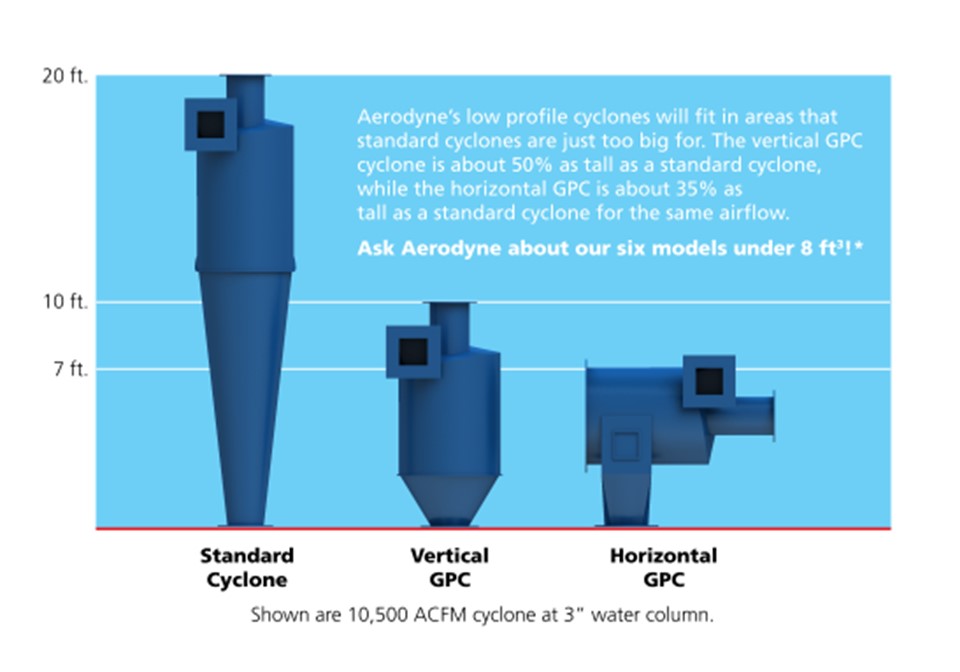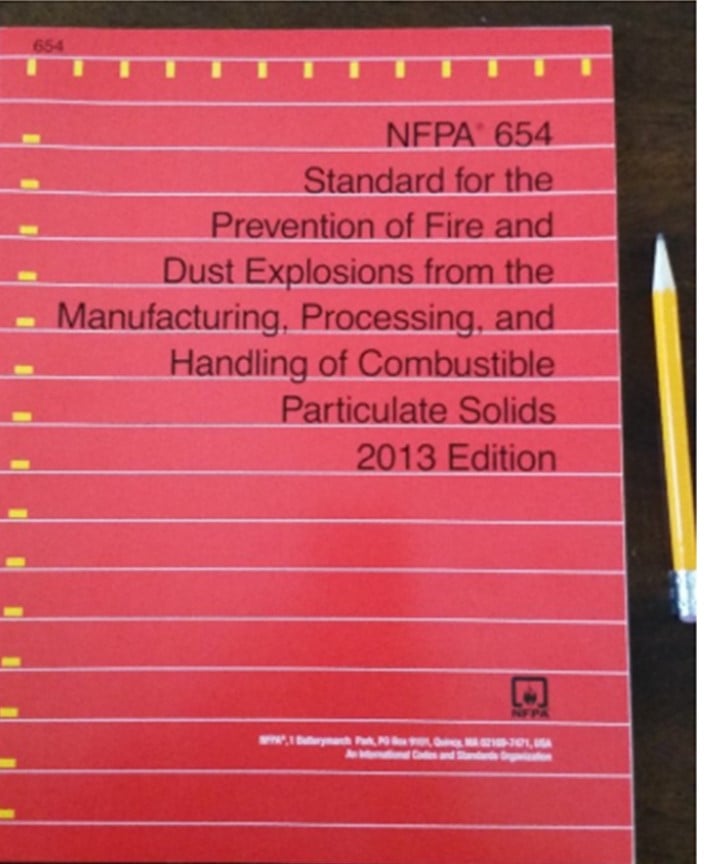When selecting the cyclone for a dust collection process, there are different factors affecting sizing and cost of the cyclone. The cyclone should be sized to compliment the airflow of the system and the required dust removal efficiency. Process conditions will dictate suitable materials of construction as well as any special design requirements.
Part 3: Materials of Construction
Cyclone costs are largely dependent on the materials of construction. They can be constructed of materials from plastics to special alloys such a Hastelloy or Monel. The materials of construction should be selected based on the process requirements more than costs.
These requirements include chemical and corrosion resistance, industry standards, and cleanability. Plastic cyclones are not really suitable for most industrial applications. They can provide low cost dust control for garage woodworking shops and can be used in wet applications, but they don’t usually last long in dry applications and can have issues with static electricity.
The following chart shows relative costs for cyclones based on the material of construction.
5 Signs Your Dust Collection System Needs a Pre-Filter
Watch the video from the Dust Efficiency Clinic discusses how using a pre-filter will optimize your dust collection system.
If you prefer this valuable information in white paper form, get our whitepaper, Top 5 Reasons to Use a Cyclone as a Pre-filter.
To learn more about which dust collector, please contact our experts at 440-543-7400 or visit our website: www.dustcollectorhq.com.
To improve efficiency and safety, there is no substitute for an on-site inspection by an experienced expert. Click below to start with a free 20-minute phone consultation by clicking the button.

